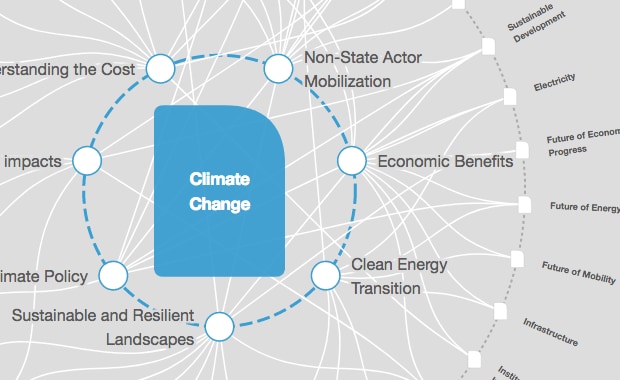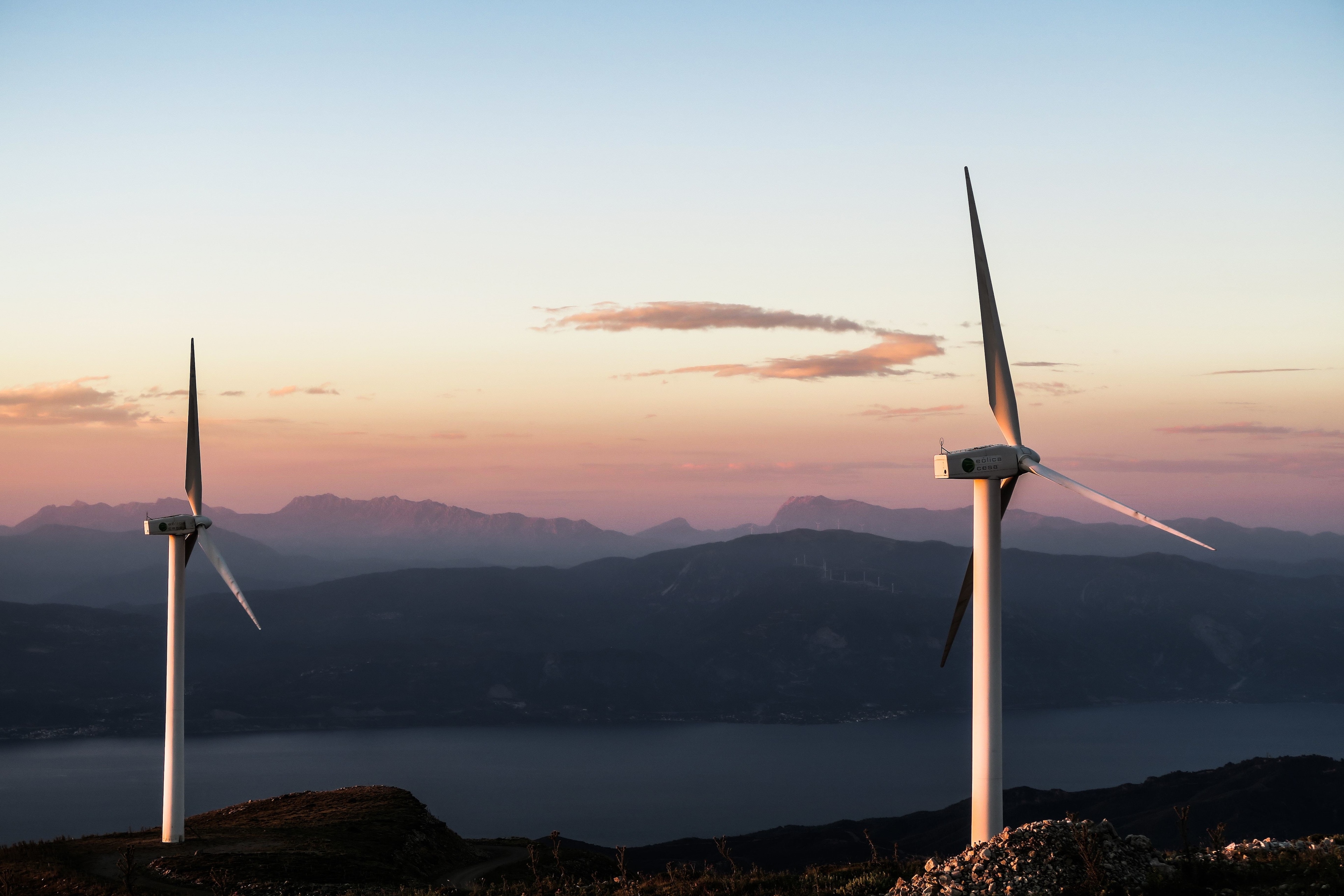Analysis: How low-sulphur shipping rules are affecting global warming

Low-sulphur shipping fuel: '...unlikely to be sufficient to explain the spike in global sea surface temperature in recent weeks' Image: Pexels/Martin Damboldt

Get involved with our crowdsourced digital platform to deliver impact at scale
Stay up to date:
Climate Crisis
- The International Maritime Organization (IMO) implemented new regulations in 2020 that require ships to use low-sulphur fuel for public health reasons.
- This has led to a welcome decrease in sulphur dioxide (SO2) emissions from shipping - but this may have inadvertently given a slight boost to ocean surface temperatures.
- This shift likely won't change the long-term trajectory and there are a number of other factors contributing to current record-warm ocean temperatures.
The International Maritime Organization (IMO) rules have had some success in improving public health. Global emissions of sulphur dioxide (SO2) – a health-damaging air pollutant – have dropped by about 10% as a result.
But the shift to low-sulphur shipping fuel has had an additional consequence.
Sulphur particles contained in ships’ exhaust fumes have been counteracting some of the warming coming from greenhouse gases. But lowering the sulphur content of marine fuel has weakened the masking effect, effectively giving a boost to warming.
Some researchers have proposed that the drop in SO2 as a result of the IMO’s clean air regulations could be behind a recent spike in global sea surface temperature.
Carbon Brief analysis shows that the likely side-effect of the 2020 regulations to cut air pollution from shipping is to increase global temperatures by around 0.05C by 2050. This is equivalent to approximately two additional years of emissions.
While this will contribute to warming and make it even more difficult to avoid exceeding 1.5C in the coming decades, a number of other factors are likely contributing to the ocean heatwave.
These include a massive eruption of an underwater volcano in the south Pacific, an unusual absence of Saharan dust and a growing El Niño.
What’s the World Economic Forum doing about climate change?
Phasing down
Nearly all SO2 emissions today are a by-product of fossil fuel combustion.
Globally, SO2 emissions increased from around 6 million tonnes (MtSO2) per year in the 1970s to more than 10MtSO2 per year in the 2000s and 2010s.
SO2 emissions from fossil fuels have long contributed to severe health impacts through the formation of particulate matter known as PM2.5.
Studies estimate that the high sulphur content of marine fuel – which is much higher than levels allowable on land – contributes to between 19,000 and 91,000 premature deaths each year in coastal regions.
Scientists have long included a gradual phaseout of SO2 emissions in climate models as the world transitions away from fossil fuels.
Nearly all emissions scenarios assessed in the recent Intergovernmental Panel on Climate Change’s Sixth Assessment Report (AR6) expect SO2 emissions to decline in the future. The decline in SO2 is faster in scenarios where fossil fuels are phased out more rapidly.
In 2020, regulations introduced by the IMO imposed strict limits on the sulphur content of marine fuels. The new rules lowered the maximum percentage of sulphur from 3.5% to 0.5% for all ships operating worldwide.
This followed a more limited restriction in place between 2010 and 2015 that only applied to ships operating around the coasts of North America and the North Sea.
The rapid phaseout of sulphur in marine fuels likely reduced global SO2 emissions by around 8.5MtSO2 per year, to around 2.5 MtSO2 per year. This represents an abrupt decline in global SO2 emissions of around 10% after 2020.

In this analysis, Carbon Brief estimates post-2020 SO2 emissions based on the projected impact of the low-sulphur fuel regulations, as the global aerosol dataset (CEDS) is only updated to 2019.
It is possible that compliance with the regulations has not been universal and that the adoption of low-sulphur fuel might be slower than this analysis assumes.
That said, studies undertaken after the phaseout show a strong
reduction in measurable ship tracks that occur due to the effects of SO2 on cloud formation. The authors attribute this to the more stringent ship emission regulations since 2020.
Potential culprit
SO2 has a strong cooling effect on the climate, both through directly reflecting incoming sunlight and by acting as cloud condensation nuclei. This increases the formation of reflective clouds.
Given the strong cooling impact of SO2, a 10% reduction in emissions of SO2 will result in additional global warming.
In recent weeks, there has been a huge amount of attention surrounding record sea surface temperature (SST) globally, with some suggesting that the phaseout of sulphur in marine fuel could be a major driver of the warming.
The figure below shows global SST from the US National Oceanic and Atmospheric Administration (NOAA) Optimum Interpolation SST (OISST) dataset for each year since 1981. The current year, 2023, is shown by the solid black line.
Current SST is around 0.2C above the prior record for this time of year, set last year in 2022.

Exactly how much additional warming will result from a 10% reduction in SO2 emissions is a challenging question to answer.
This is due to large differences between models in their estimates of both radiative forcing from SO2 (and other aerosols) and how sensitive the climate is to changes in forcing.
Radiative forcing is a measure of the combined effect of greenhouse gases, aerosols and other factors that can influence climate to trap additional heat.
Climate impact
In general, SO2 emissions have a larger climate impact in regions where less is emitted. This is because the effects of sulphur particles on cloud formation saturate after a certain point, such that additional emissions have a smaller effect.
The figure below shows the location of SO2 emissions from marine fuel prior to the IMO regulations in 2020 (left) and the pattern of natural dimethyl sulphide (DMS) emissions, which are primarily emitted by algae (right).
The largest warming impacts are expected where high SO2 emissions from marine fuel overlap with lower DMS emissions. Both areas of high shipping track concentrations (North Atlantic and North Pacific) also have high DMS levels.

To estimate the likely climate impacts of regulations limiting the sulphur content of marine fuel, Carbon Brief calculates the effect of reducing global SO2 emissions by 8.5MtSO2 per year compared to the same climate scenario without those SO2 emission reductions.
The figure below shows historical SO2 emissions up to 2015 and projected SO2 emissions up to 2050 in SSP2-4.5, a middle-of-the-road scenario that is broadly consistent with the emissions pathway the world is following under policies in place today (light grey).
The same scenario with reduced SO2 emissions is shown alongside (yellow). Black squares represent two observational data points for SO2 emissions in 2019 and 2022 from Forster et al (2023).

It is worth noting that the observational estimates of SO2 represented by the black squares above do not explicitly model the effects of the IMO regulations, but include some observations that may overlap with the regulation effects. This may be reflected in the difference between the 2022 observational estimate and the sulphur-adjusted SSP2-4.5 scenario above.
There is also a risk of double counting SO2 reductions over longer time horizons. Some reduction in SO2 from shipping might be expected to occur even in the absence of the 2020 regulations as the shipping industry – and the world more broadly – decarbonises.
In this case, the two scenarios on the figure above would converge towards the upper (grey) scenario over time.
Forcing a change
Using a simple climate model – the Finite Amplitude Impulse Response (FaIR) model – this analysis compares the change in radiative forcing between the two versions of the SSP2-4.5 scenario, with and without a reduction in SO2 emissions of 8.5MtSO2 per year after 2020.
The results of the comparison suggest that the reduction in SO2 emissions as a result of the 2020 regulations requiring low-sulphur marine fuel increases radiative forcing by 0.079 watts per square metre across Earth’s surface.
This estimate is reasonably well in-line with – though on the lower end of – a number of other published studies that have assessed the likely climate impact of marine low-sulphur fuel.
The figure below shows Carbon Brief’s estimate on the left hand side compared with eight different studies published over the past two decades.

It is possible that the increase in forcing over the oceans might be larger than predicted by FaIR, as those regions have lower aerosol concentrations and, thus, larger sulphur effects on cloud formation per unit of emissions. However, as mentioned earlier, oceans have larger background levels of sulphur from natural dimethyl sulphide emissions than land regions.
Warming boost
The next step in working out the climate impact of low-sulphur regulations for marine fuel is to translate the change in radiative forcing into warming.
This analysis uses a version of FaIR designed to emulate an ensemble of 66 of the latest generation models from the Coupled Model Intercomparison Project (CMIP6).
The figure below shows the resulting warming, including the mean (blue line) and 5th/95th percentile (blue shading). The central estimate is around 0.045C warming after 30 years.

An analysis in 2009 estimated that a 90% decline in marine SO2 emissions would result in around 0.05C of additional warming, with a rapid climate response in the first 15 years. This is similar to Carbon Brief’s central estimate of around 0.045C warming after 30 years.
The effects of lower SO2 emissions on the climate are not instantaneous, as it takes some time for the Earth system to respond to a change in forcing. About half of the response to a change in forcing is experienced in the first four years, while the remainder occurs more slowly.
In the case of SO2 emissions over the ocean, the response may be even slower than simulated in the FaIR model due to faster equilibration of temperatures over land than over the ocean.
The figure below shows Carbon Brief’s estimate of overall warming by 2050 with the IMO restrictions on sulphur content in marine fuel (blue) compared to with no regulations (orange).
The SSP2-4.5 scenario is comparable to what is expected under policies in place today and assumes only a modest reduction in future SO2 emissions (compared to deep mitigation scenarios which assume much deeper reductions).

Carbon Brief’s analysis suggests that the additional warming due to the IMO regulations on marine fuel is approximately equivalent to two additional years of global greenhouse gas emissions from human activity at their current rate. While this does not fundamentally change where the world is headed in terms of warming by 2050, it does make it more difficult to limit warming to 1.5C over the next few decades.
However, the change in radiative forcing due to a drop in SO2 emissions remains highly uncertain, especially over the oceans. The figure below shows the projected warming in 2030 and 2050 for a variety of forcing estimates found in the literature.
Taking the high end of the range of estimates of radiative forcing could result in up to 0.18C additional warming by 2030 and 0.25C additional warming by 2050, though most studies have found lower forcing estimates than this.

Contributing factor
Given that there will be a lagged response from the climate to the shift to low-sulphur marine fuel, it is reasonable to expect less than half of the warming resulting from the 2020 regulations to have materialised by 2023, likely only in the hundredths of a degree globally.
This is unlikely to be sufficient to explain the spike in global sea surface temperature in recent weeks, which is around 0.2C above the prior record for this time of year.
Rather, there are a number of other factors likely contributing to current record-warm ocean temperatures. These include the end of a moderate La Niña event at the start of the year and a developing El Niño, a shift which tends to result in higher global temperatures.
Stratospheric water vapour from the 2022 eruption of the Hunga Tonga-Hunga Ha’apai volcano and an unusual absence of dust from the Sahara Desert over the tropical North Atlantic may also be helping drive the ocean heatwave.
In summary, the primary driver of climate change remains CO2 emissions from fossil fuels. The shift to low-sulphur marine fuel triggered by clean air regulations may increase the warming we experience in the near future, but it will not change our long-term trajectory of around 2.6C of warming by the end of the century.
Don't miss any update on this topic
Create a free account and access your personalized content collection with our latest publications and analyses.
License and Republishing
World Economic Forum articles may be republished in accordance with the Creative Commons Attribution-NonCommercial-NoDerivatives 4.0 International Public License, and in accordance with our Terms of Use.
The views expressed in this article are those of the author alone and not the World Economic Forum.
The Agenda Weekly
A weekly update of the most important issues driving the global agenda
You can unsubscribe at any time using the link in our emails. For more details, review our privacy policy.
More on Climate ActionSee all
Kate Whiting
April 26, 2024
Santiago Gowland
April 24, 2024
Amanda Young and Ginelle Greene-Dewasmes
April 23, 2024
Andrea Willige
April 23, 2024
Agustin Rosello, Anali Bustos, Fernando Morales de Rueda, Jennifer Hong and Paula Sarigumba
April 23, 2024
Carlos Correa
April 22, 2024






